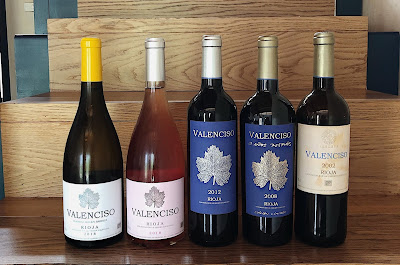You may be a little tired of reading all these key moments, best of... etc. of the last decade. However, it is truly remarkable how the wine landscape has changed in just ten years. Here are my 10 mega trends of the last decade.
1) Fruit and freshness to the fore. This occurred in many ways; earlier picking, less alcohol, less new oak, larger barrels.
2) A more international landscape. Curiosity to discover new wines increased. Red wines from Sicily, white wines from Northern Spain and Italy, lesser regions from the US and France, wines from Greece and Uruguay, to name a few.
3) Adjustment to warmer climates. This occurred in a number of ways; search for heat tolerant varieties, planting at higher altitudes, changes to vineyard management
4) Confluence of old world and new world. French wines are getting bigger, US and Australian wines try to reduce body weight.
5) The rise of biodynamic and orange wines. This includes new avant garde producers as well as established ones (e.g. Cullen in Australia).
6) Breaking with tradition. A deliberate attempt to do someting new or different in the process of making wine as well as the final product (check out Adelaide Hills producers).
7) The rise of lighter red wines. Rosé becomes a serious wine, as does Beaujolais and Pinot Noir at value price points.
8) Different wine values by millennials. Immediate consumption, fun, fashion and no interest in traditional measures of quality.
9) The closure battle hangs in the balance. Screw caps are gaining share, but cork producers employ technology successfully to eliminate faults.
10) Retail ubiquity. Consumers buy at chains, specialized stores, wineries and online.
Would you have predicted these in 2008, 2009? Maybe some. What will the next decade have in store? Any thoughts?
1) Fruit and freshness to the fore. This occurred in many ways; earlier picking, less alcohol, less new oak, larger barrels.
2) A more international landscape. Curiosity to discover new wines increased. Red wines from Sicily, white wines from Northern Spain and Italy, lesser regions from the US and France, wines from Greece and Uruguay, to name a few.
3) Adjustment to warmer climates. This occurred in a number of ways; search for heat tolerant varieties, planting at higher altitudes, changes to vineyard management
4) Confluence of old world and new world. French wines are getting bigger, US and Australian wines try to reduce body weight.
5) The rise of biodynamic and orange wines. This includes new avant garde producers as well as established ones (e.g. Cullen in Australia).
6) Breaking with tradition. A deliberate attempt to do someting new or different in the process of making wine as well as the final product (check out Adelaide Hills producers).
7) The rise of lighter red wines. Rosé becomes a serious wine, as does Beaujolais and Pinot Noir at value price points.
8) Different wine values by millennials. Immediate consumption, fun, fashion and no interest in traditional measures of quality.
9) The closure battle hangs in the balance. Screw caps are gaining share, but cork producers employ technology successfully to eliminate faults.
10) Retail ubiquity. Consumers buy at chains, specialized stores, wineries and online.
Would you have predicted these in 2008, 2009? Maybe some. What will the next decade have in store? Any thoughts?











































